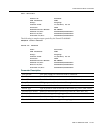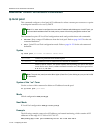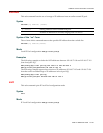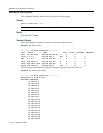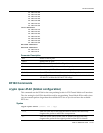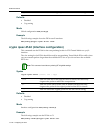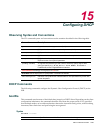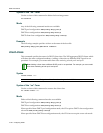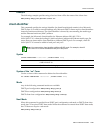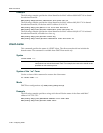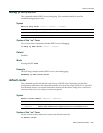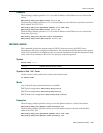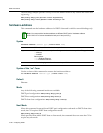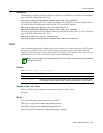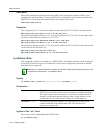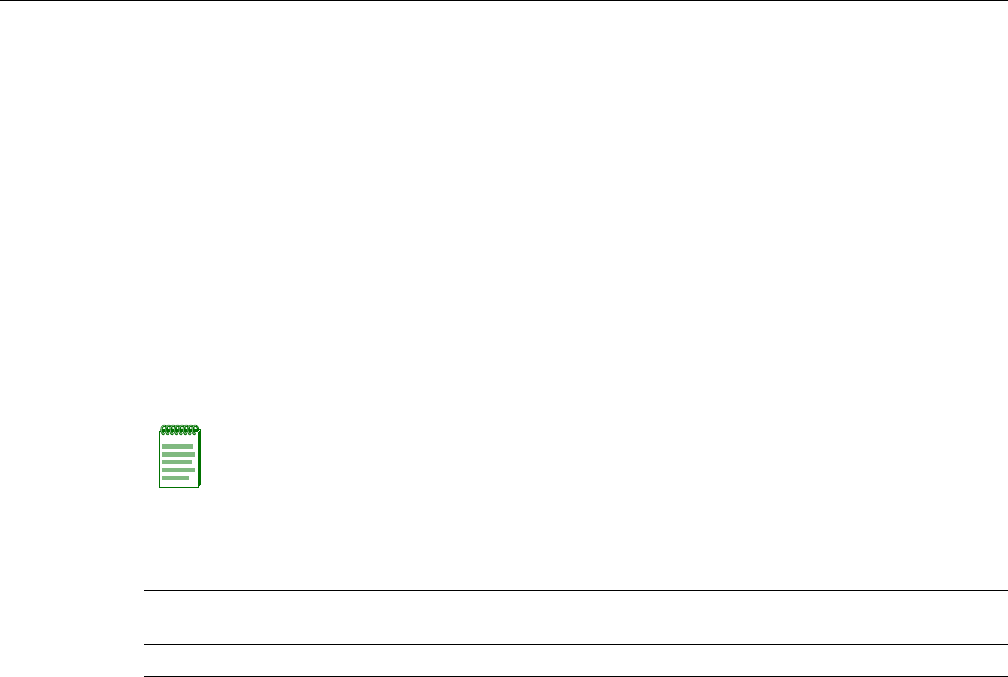
DHCP Commands
XSR CLI Reference Guide 15-85
Example
Thefollowingexamplespecifies stringclientclass1that willbethenameoftheclientclass:
XSR(config-dhcp-pool)#client-class cc1
client-identifier
Thiscommandspecifiestheuniqueidentifier(indottedhexadecimalnotation)foraMicrosoft
DHCPclient.Itisvalidformanualbindingsonly.MicrosoftDHCPclientsrequireclientidentifiers
insteadofhardwareaddresses.Theclientidentifierisformedbyconcatenatingthemediatype
andtheEthernethardware(MAC)address.
Forexample,the
MicrosoftclientidentifierforEthernetaddress0001.f4 01.2710is
0100.01f4.0127.10,wheretheleading01(italicizedabove)indicatestheEthernetmediatype.Be
awarethatyoucannotaddaclientidentifiertodifferentDHCPpools.Forexample,clientID
0100.01f4.0127.10cannotbeaddedtobothpool1andpool2.
Syntax
client-identifier identifier [client-class name]
Syntax of the “no” Form
Usethenoformofthiscommandtodeletetheclientidentifier:
no client-identifier identifier [client-class name]
Mode
Anyofthefollowingcommandmodesareavailable:
DHCPpoolconfiguration:
XSR(config-dhcp-pool)#
DHCPhostconfiguration:XSR(config-dhcp-host)#
DHCPclientclassconfiguration:XSR(config-dhcp-class)#
Next Mode
WhenthiscommandisspecifiedfromDHCPpoolconfigurationsub‐modeorDHCPclient‐class
mode,theCLIacquiresDHCPhostmode.WhenthecommandisenteredfromDHCPhostmode,
theCLIdoesnotacquireasub‐mode.
XSR(config-dhcp-host)#
Note: You cannot add a client identifier to different DHCP pools. For example, client ID
0100.01f4.0127.10 cannot be added to both pool1 and pool2.
identifier Unique identification of the client in dotted hexadecimal notation; for example:
0100.01f4.0127.10.
name Specifies a client belonging to a client class.



